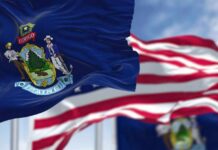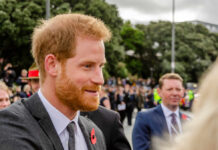
Starbucks is rolling out a new uniform policy for its baristas across North America, marking a return to traditional coffeehouse roots while hoping to improve both employee satisfaction and customer service.
At a Glance
- Starting May 12, Starbucks baristas must wear solid black tops with khaki, black, or blue denim bottoms
- Each employee will receive two complimentary Starbucks-branded shirts
- The dress code change is part of CEO Brian Niccol’s “Back to Starbucks” strategy
- Starbucks is also simplifying its menu, cutting 30% of food and beverage offerings
- Employee benefits are being enhanced, including doubled paid parental leave
A Uniform Approach to Customer Experience
Starbucks Corp. is implementing a standardized dress code for baristas across its North American locations as part of a broader initiative to revitalize sales by enhancing the overall cafe atmosphere. The new uniform requirements, which take effect on May 12, represent a significant shift from the company’s previous, more lenient dress code that allowed employees to wear tops of virtually any color. Under the updated guidelines, baristas must wear solid black shirts, though they have flexibility in sleeve length and collar style.
While employees still have the option to wear their own attire, Starbucks will provide each barista with two complimentary shirts from a new company-branded line. This approach aims to create visual consistency across locations while still allowing workers some personal expression. The dress code specifically permits solid black short-sleeve or long-sleeve shirts with options for crew neck, collared, or button-up styles, paired with bottoms in khaki, black, or blue denim.
Returning to Coffeehouse Roots
The uniform update is a key component of CEO Brian Niccol’s comprehensive “Back to Starbucks” strategy, which focuses on returning the company to its coffeehouse foundations while improving operational efficiency and profitability.
Since taking the helm, Niccol has implemented several structural changes, including eliminating 1,100 support roles and closing unfilled positions to streamline operations. These moves reflect a determined effort to refocus the brand on what made it successful in the first place.
Beyond dress code changes, Starbucks is working to simplify its menu by cutting approximately 30% of its food and beverage offerings. The company has already removed over a dozen less popular drinks, allowing baristas to focus on preparing core items more efficiently. This menu streamlining aims to reduce complexity in stores while ensuring that customers can still find their favorite classic Starbucks beverages.
Enhancing Customer Connection
The company is also bringing back personal touches that had been phased out during recent years. Baristas will now return to writing messages on cups with Sharpie markers, and the self-service condiment bars are being reintroduced to stores. These changes directly respond to customer feedback about wanting more personalized service experiences. Additionally, Starbucks has reversed its controversial open-door policy, now limiting restroom access and in-store lingering to paying customers only.
For in-store guests, Starbucks is enhancing value with free refills of brewed coffee and tea, and the company has eliminated surcharges for alternative milk options. Niccol is also working to improve pricing transparency within the Starbucks app, addressing complaints from customers who felt pricing structures were confusing or misleading. These efforts collectively aim to rebuild the warm, welcoming atmosphere that originally defined the Starbucks experience.
Boosting Employee Benefits
Recognizing that satisfied employees deliver better customer service, Starbucks is significantly improving its benefits package. The company plans to double its paid parental leave benefits, with some workers receiving up to three times their original allotment. This enhancement positions Starbucks more competitively in the labor market while demonstrating commitment to employee well-being and work-life balance.
The combination of dress code standardization, operational streamlining, and enhanced benefits reflects Starbucks’ comprehensive approach to revitalizing its brand identity. By creating a more cohesive employee appearance while simultaneously improving working conditions, the company aims to strengthen both the customer experience and staff satisfaction. These changes reflect a careful balance between maintaining Starbucks’ distinctive character while addressing modern retail challenges.

























